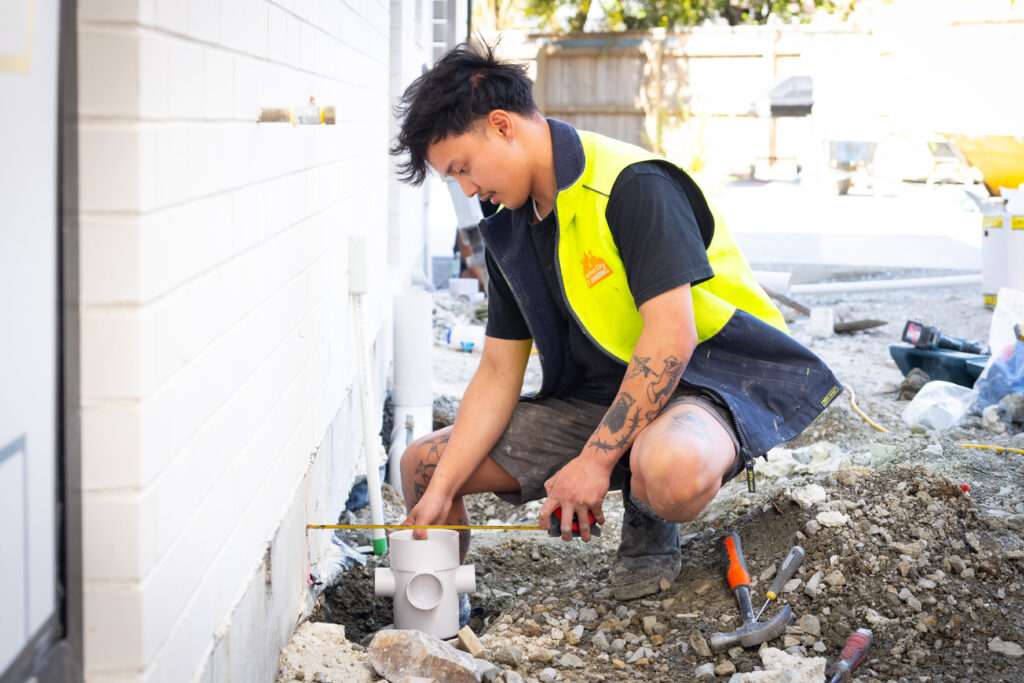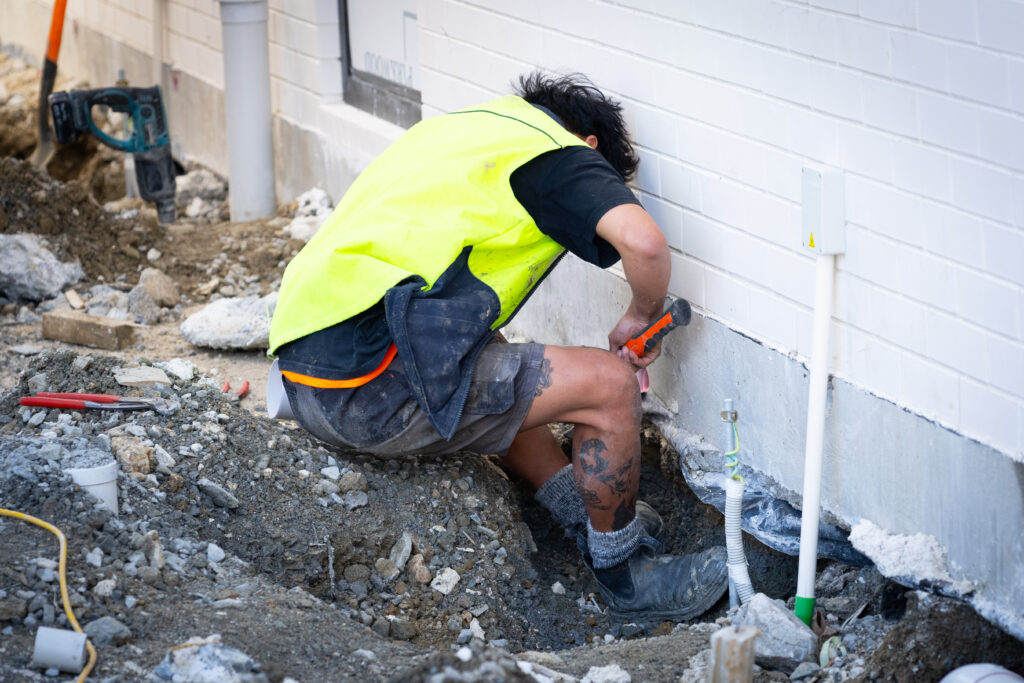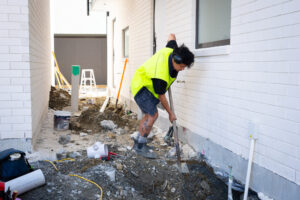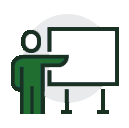What do plumbers and drainlayers do?
Plumbers do a wide variety of jobs, you could be working on a farm one day or a high rise building the next.
On any given day you could be:
- Installing hot water cylinders in a multi-million dollar house
- Doing bathroom renovations, putting in sinks, toilets, showers, and baths
- Installing pipework in hospitals or aged care facilities
- Working in an industrial plant installing pipes
- Installing metal roofing and spouting systems
- Using a digger to dig trenches
- Working in an industrial plant installing pipes
- Installing environmental waste water systems.



















